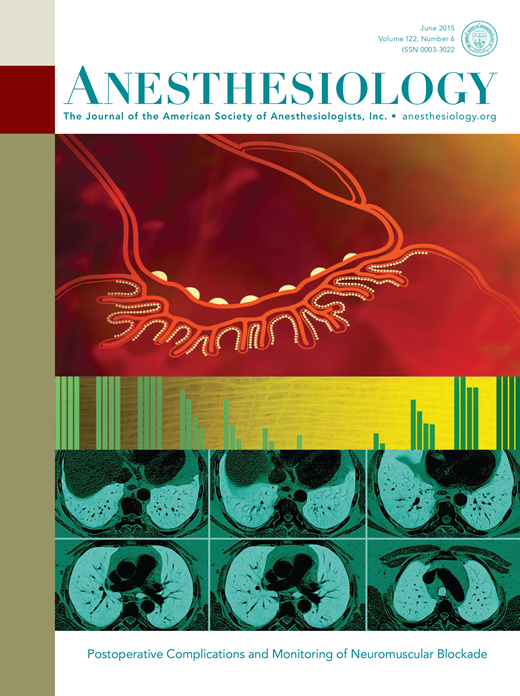The Story of Enhancing Recovery after Surgery.
IF 9.1
1区 医学
Q1 ANESTHESIOLOGY
引用次数: 0
Abstract
Multimodal approach to control postoperative pathophysiology and rehabilitation. By Kehlet H. Br J Anaesth 1997; 78:606-17 Major surgery is still associated with undesirable sequelae such as pain, cardiopulmonary, infective and thromboembolic complications, cerebral dysfunction, nausea and gastrointestinal paralysis, fatigue, and prolonged convalescence. The key pathogenic factor in postoperative morbidity, excluding failures of surgical and anesthetic technique, is the surgical stress response with subsequent increased demands on organ function. These changes in organ function are thought to be mediated by trauma-induced endocrine metabolic changes and activation of several biologic cascade systems (cytokines, complement, arachidonic acid metabolites, nitric oxide, free oxygen radicals, among others). To understand postoperative morbidity, it is therefore necessary to understand the pathophysiologic role of the various components of the surgical stress response and to determine whether modification of such responses may improve surgical outcome. While no single technique or drug regimen has been shown to eliminate postoperative morbidity and mortality, multimodal interventions may lead to a major reduction in the undesirable sequelae of surgical injury with improved recovery and reduction in postoperative morbidity and overall costs.提高手术后恢复的故事。
多模式方法控制术后病理生理和康复。作者:Kehlet H. Br J anesth 1997;78:606-17大手术仍伴有不良后遗症,如疼痛、心肺、感染和血栓栓塞并发症、脑功能障碍、恶心和胃肠麻痹、疲劳和恢复期延长。除手术和麻醉技术失败外,术后发病率的主要致病因素是手术应激反应,随之而来的对器官功能的需求增加。这些器官功能的变化被认为是由创伤诱导的内分泌代谢变化和几个生物级联系统(细胞因子、补体、花生四烯酸代谢物、一氧化氮、自由基等)的激活介导的。因此,为了了解术后发病率,有必要了解手术应激反应各组成部分的病理生理作用,并确定改变这些反应是否可以改善手术结果。虽然没有单一的技术或药物方案被证明可以消除术后发病率和死亡率,但多模式干预可能会大大减少手术损伤的不良后遗症,改善恢复,降低术后发病率和总成本。
本文章由计算机程序翻译,如有差异,请以英文原文为准。
求助全文
约1分钟内获得全文
求助全文
来源期刊

Anesthesiology
医学-麻醉学
CiteScore
10.40
自引率
5.70%
发文量
542
审稿时长
3-6 weeks
期刊介绍:
With its establishment in 1940, Anesthesiology has emerged as a prominent leader in the field of anesthesiology, encompassing perioperative, critical care, and pain medicine. As the esteemed journal of the American Society of Anesthesiologists, Anesthesiology operates independently with full editorial freedom. Its distinguished Editorial Board, comprising renowned professionals from across the globe, drives the advancement of the specialty by presenting innovative research through immediate open access to select articles and granting free access to all published articles after a six-month period. Furthermore, Anesthesiology actively promotes groundbreaking studies through an influential press release program. The journal's unwavering commitment lies in the dissemination of exemplary work that enhances clinical practice and revolutionizes the practice of medicine within our discipline.
 求助内容:
求助内容: 应助结果提醒方式:
应助结果提醒方式:


